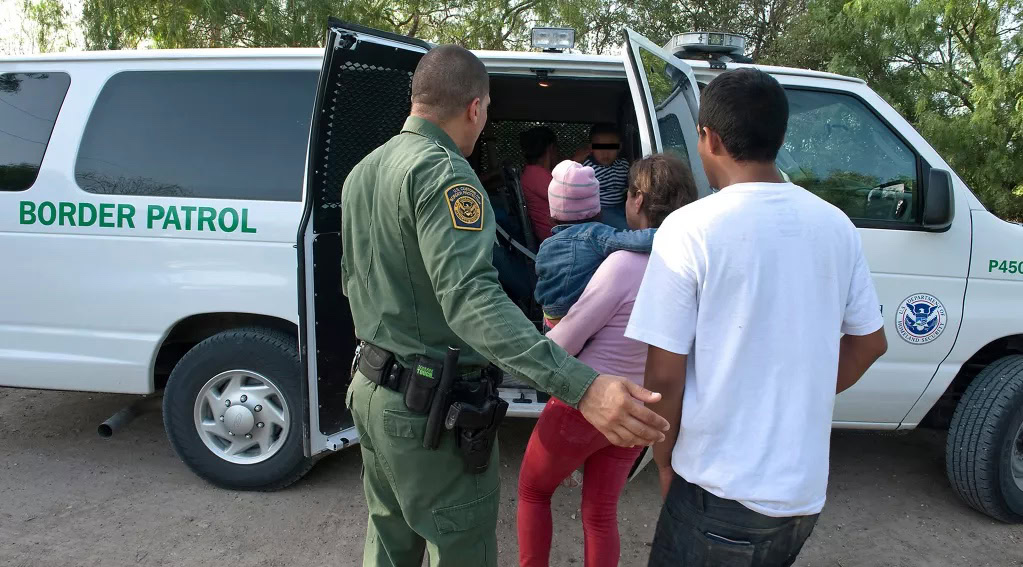By Kari Jacobson
FAIR
Last week, the Department of Homeland Security’s (DHS) Office of the Inspector General (OIG) released a report revealing that Immigration and Customs Enforcement (ICE) had lost track of more than 32,000 unaccompanied alien minors over the past four years as a result of the agency’s inability to properly monitor them after they were released into the country.
While the Department of Health and Human Services (HHS) assumes custody of unaccompanied alien children (UAC) ICE is responsible for managing the minors’ immigration cases. This includes ensuring that UACs are issued Notices to Appear in immigration court. According to ICE’s Juvenile Coordinator Handbook, proper case management comprises: (1) monitoring UAC status in immigration proceedings, (2) documenting case updates in ICE databases, and (3) removing UACs with final orders of removal.
Despite these responsibilities, the Inspector General revealed between FY 2019 and FY2023, ICE lost track of at least 32,000 UACs.
The true number of alien minors unaccounted for is likely much higher because of ICE’s failure to issue NTAs to unaccompanied minors. As of May 2024, ICE had not issued notices to appear (NTAs) or scheduled court dates for more than 291,000 UACs. In fact, roughly 90,000 of these minors crossed into the U.S. as far back as 2021 and yet they still do not have court dates. This failure occurred despite the fact that federal law requires ICE to place UACs in removal proceedings, which begins with the issuance of an NTA. Obviously, ICE cannot track a case that does not exist. Moreover, with respect to the welfare of these minors, failure to issue an NTA means that ICE has no information regarding the status or welfare of these minors since they were placed with sponsors by HHS. In its report, the Inspector General attributed the failure to issue NTAs to lack of staff and other resources at ICE.
The Inspector General highlighted several additional reasons for ICE’s failure to properly monitor and manage UAC cases. First, ICE does not have an “accurate, effective, or automated process” for sharing information with relevant agencies when a UAC does not appear for his or her immigration hearing. Instead, ICE uses manual processes in which agents sift through other agency’s databases to update information in ERO records. Even more concerning, ICE and HHS’ Office of Refugee Resettlement (ORR) rely on email to share information about UACs – if the information is shared at all. According to the OIG, ICE agents in the field acknowledged that automated sharing of information would “help reduce reliance on manual workarounds.”
Finally, the Inspector General found that ICE is limited in its ability to monitor UACs, and that it does not have processes in place to address UACs who fail to appear for their hearings. Shockingly, UACs are not required to check in with ERO at any time leading up to their appearance in immigration court. The Inspector General revealed that “in some cases, HHS personnel and ICE officers said they never see the UACs before or after HHS releases them to sponsors.” If these UACs are not issued NTAs and given court dates, agencies may never be able to see UACs, and affirm their well-being. Additionally, ICE has limited ability to respond when it determines a UAC is at risk, because it has no authority beyond managing their cases. In one example, ICE officers were unable to intervene in a case involving “a UAC whose sponsor claimed the UAC was in an inappropriate relationship with her husband.”
The OIG recommended that ICE implement two changes to improve its management and oversight of UAC cases.
- Develop and implement an automated system to document court appearances and maintain address information of UACs; and
- Develop and implement a process to identify UACs who fail to appear for their immigration hearings, and share the information internally with HHS.
Members of Congress were quick to point to the report and argue that the Biden-Harris Administration’s immigration policies have exacerbated the potential for UACs to be “lost” and placed into dangerous situations. In a statement Tuesday, Speaker Mike Johnson (R-La.) said, “This shocking new report confirms our darkest fears and exposes the failures of Kamala Harris. This administration has lost track of hundreds of thousands of migrant children, likely putting many in the hands of bad actors.” Senator Ted Cruz (R-Texas) underscored this point, arguing that, “ICE has no way of knowing if the children are being exploited, forced into sex-work, or joining gangs. We wouldn’t tolerate any foreign nation moving hundreds of thousands of children into bondage, and we shouldn’t tolerate it here. We should demand more from the Biden-Harris administration.”
While the report focuses on ICE’s failures to properly monitor UACs and ensure they appear for immigration hearings, the shortfalls begin with HHS rushing to place UACs with poorly vetted sponsors. HHS does not consider the immigration status of a potential sponsor during the vetting process. This failure could result in children being placed with illegal alien sponsors who are traffickers or criminals seeking to exploit them, or are simply illegal aliens themselves who may discourage the minors from cooperating with their immigration proceedings. If this weren’t bad enough, in 2021 HHS revised its standard operating procedure with ICE to eliminate the sharing of critical information needed to assess the risk of UACs placed with sponsors. This change included eliminating the requirement that HHS provide ICE with biographic information and biometric information (i.e. fingerprints) for all potential sponsors and adult members of their household.
Rushed vetting has also resulted in ORR sending UACs to illegitimate addresses, making it even harder for ICE to locate them, and ensure they appear for their immigration hearings. A Senate roundtable in July revealed that ORR has sent children to live with sponsors who listed addresses that didn’t exist or were traced to abandoned houses and even open fields. According to a Florida Grand Jury report, sponsors also used addresses of strip clubs, and empty lots surrounded by shipping containers.
The policies governing UACs have long been abused, but the Biden-Harris open-borders, anti-enforcement agenda has opened the floodgates and allowed record encounters of UACs across our borders. Between FY2021 and FY2024 to date, over 535,000 UACs have been apprehended at our borders and over 430,000 have been released to sponsors—nearly double the amount of releases during the last six years combined.
While the Biden-Harris Administration claims to support compassionate immigration policies, the disaster it has created at our borders is a humanitarian crisis. Federal agencies are cutting corners to prioritize speed over vetting, which causes difficulty in tracking and monitoring UACs after their release to ensure compliance with immigration laws. Without policy changes to secure our borders and bolster immigration enforcement, federal agencies will continue to lose track of UACs, leaving them vulnerable to exploitative conditions.















